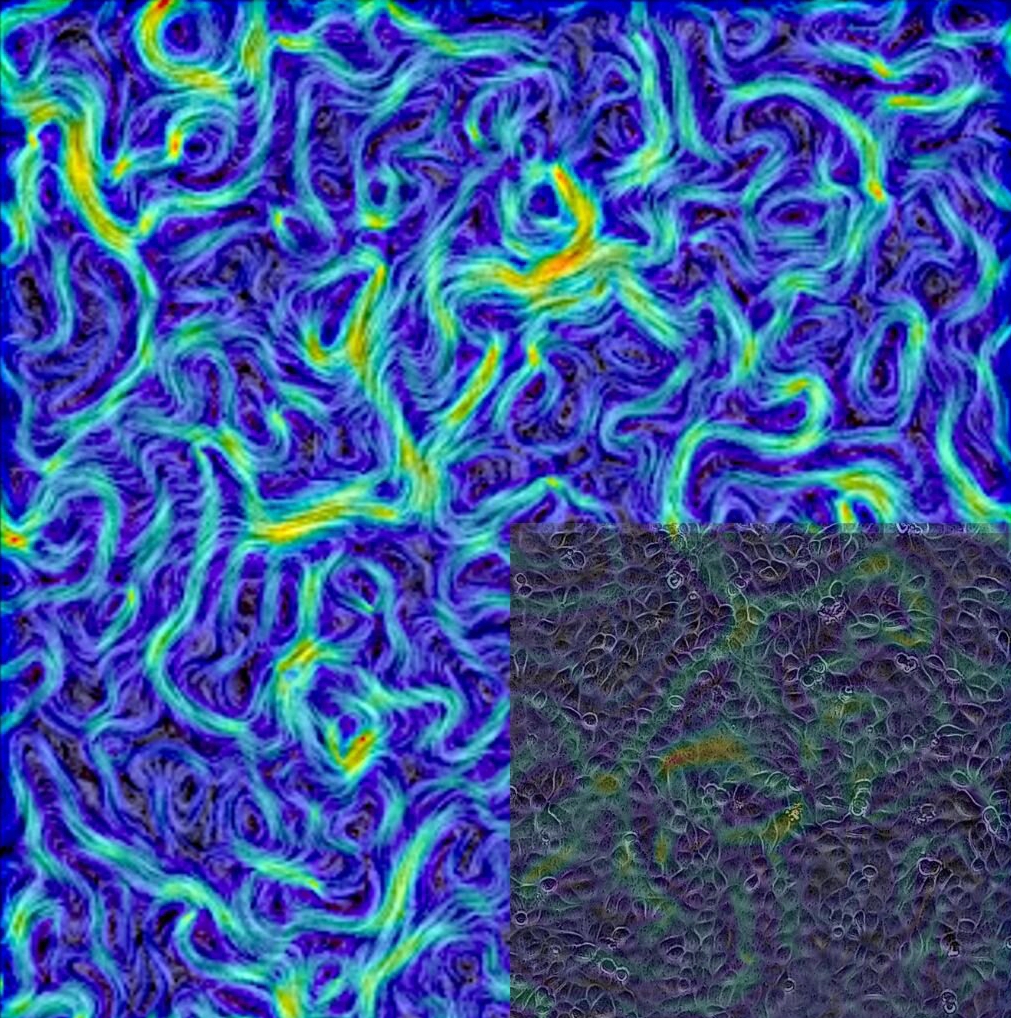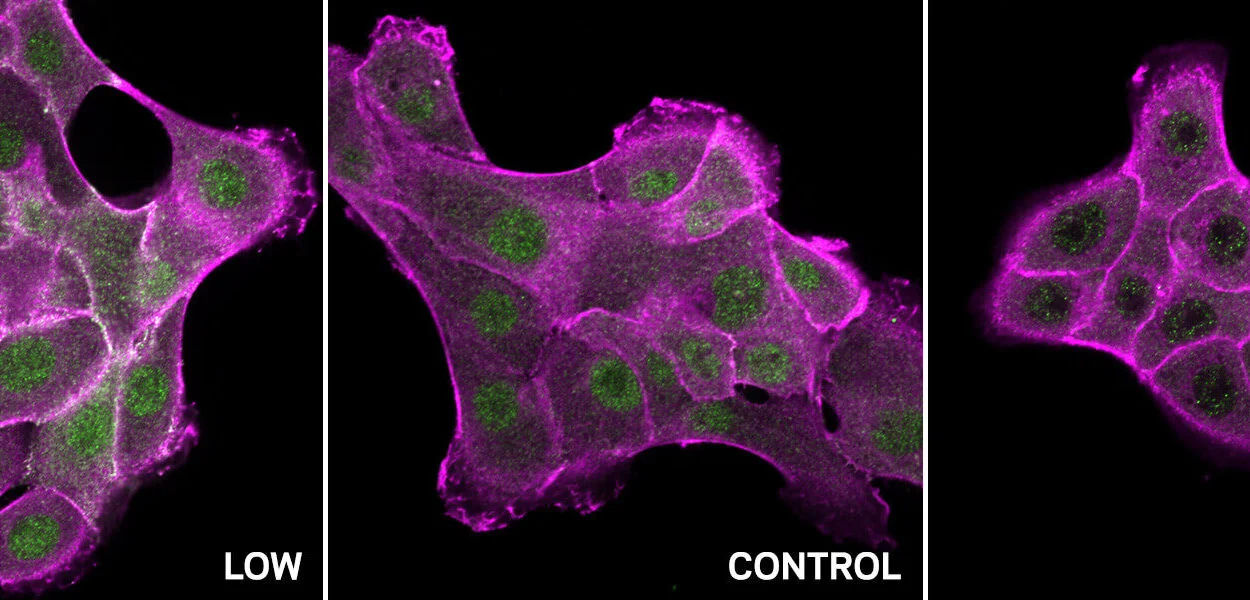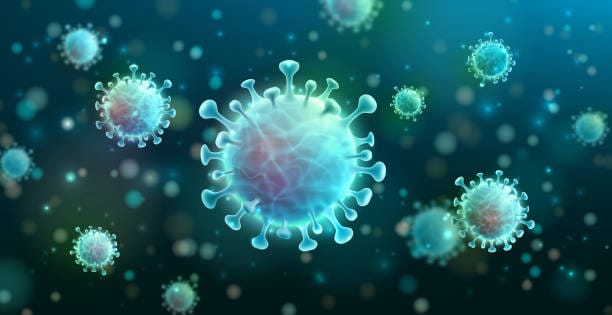In an extraordinary fusion of biology and theoretical physics, a new study published in Nature Physics has unveiled a hidden order lurking within the apparent chaos of living cells. Researchers have discovered that the swirling, collective motions of biological cells—from bacteria to human cancer cells—follow a deep mathematical symmetry known as universal conformal invariance.
This revelation not only challenges our understanding of how life organizes itself, but also bridges the gap between living matter and the abstract realms of statistical physics and quantum field theory. At the heart of this research lies a tantalizing idea: that cells across the tree of life obey the same invisible rules, no matter how different their biology may be.
The Invisible Code Beneath the Swirls
Imagine stirring a spoon through a cup of tea. You’ll see whirlpools dance across the surface, forming and dissolving in graceful patterns. Now, replace that tea with a layer of living cells—whether they’re bacteria or human tissue cells—and something surprisingly similar happens.
“When you stir a cup of water, you see whirlpools form and disappear. Something similar happens when bacteria or human cells move collectively; they form swirling patterns, too,” explained Dr. Amin Doostmohammadi, Associate Professor at the University of Copenhagen and one of the study’s co-authors.
But what stunned the researchers wasn’t just the visual resemblance. It was that these swirling patterns exhibited conformal invariance, a profound symmetry principle rooted in physics. This means the statistical properties of the cellular swirls remained the same even when zoomed in or out, stretched, or reshaped. Such a level of geometric symmetry is almost unheard of in the messy, non-equilibrium realm of living systems.
Cracking the Code of Collective Motion
In physical systems, collective behaviors often emerge at critical points—transitional states such as when water boils or metal becomes magnetic. At these thresholds, matter can exhibit universal behaviors described by conformal field theory (CFT), a powerful mathematical tool that predicts scale- and angle-preserving structures.
Applying these abstract tools to biological systems, however, has always been a challenge. Living systems are inherently noisy, active, and constantly out of equilibrium. Cells move, interact, divide, and consume energy. Could such a turbulent environment possibly follow the same universal laws as phase transitions in magnets or percolating fluids?
Driven by this bold question, the team studied four dramatically different cellular systems:
- Wild-type Pseudomonas aeruginosa – a common bacterial strain
- A mutant strain of P. aeruginosa with altered motion dynamics
- Madin-Darby Canine Kidney (MDCK) cells – epithelial cells from dog kidneys
- MDA-MB-231 human breast cancer cells – a highly aggressive cancer line
These organisms span billions of years of evolution. Some are single-celled prokaryotes; others are complex multicellular eukaryotes. Yet, when studied as dense cellular monolayers, they all displayed the same stunning statistical behaviors in their collective motion.
From Cells to Swirls: A Mathematical Voyage
To investigate these behaviors, the researchers tracked the movement of cells over time using high-resolution imaging. They generated velocity fields—maps showing how cells moved across space—and calculated vorticity, a measure of how much a local region was swirling or rotating.

The most revealing information came not from the swirling centers themselves, but from the zero-vorticity contours—the delicate boundaries separating regions of clockwise and counterclockwise rotation. Think of them as the frontiers between microscopic whirlpools.
These contours were then subjected to a rigorous suite of mathematical analyses:
- Fractal dimension: to test how complex the boundaries were across scales.
- Winding angle distributions: to study how sharply these curves twisted.
- Schramm–Loewner Evolution (SLE): a tool from statistical mechanics that classifies conformally invariant curves using a single key parameter: κ (kappa).
κ = 6: A Universal Signature
Remarkably, in all four systems, the curves were consistent with SLE with κ = 6. This value places the systems in the percolation universality class, typically used to describe how fluids seep through porous materials or how clusters form in a disordered medium.
In other words, the cells behaved like water trickling through a sponge—or electrons moving through a magnet near a critical temperature.
“This discovery suggests that, at a fundamental level, living matter organizes itself according to universal laws—laws that apply across the tree of life, from bacteria to human cells with very different biology and very different morphologies,” noted Dr. Doostmohammadi.
Modeling the Mechanics of Life
To test whether this behavior was just an artifact of biological complexity—or a truly universal phenomenon—the researchers constructed a minimal computational model. This simple system mimicked generic rules of cell movement and interaction but lacked any biological specifics.
Amazingly, the model reproduced the same conformally invariant patterns, reinforcing the idea that these universal dynamics emerge naturally from collective behavior, not from cellular details.
It’s a powerful suggestion: the laws of physics may underlie the choreography of life itself.
Living Systems as Testing Grounds for Fundamental Physics
Perhaps most mind-bending of all is the reversal this research implies. Traditionally, physics and mathematics lend their tools to explain biology. But here, living cells themselves can now serve as experimental platforms to test predictions from highly abstract domains like CFT and SLE—areas previously confined to blackboards and computer simulations.
This living laboratory opens new avenues in synthetic biology, tissue engineering, and regenerative medicine. It could inform how we design smart tissues that mimic natural growth, or how we decode the collective motion of cancer cells to halt metastasis.
Furthermore, understanding the symmetry in wound healing and tissue development could lead to breakthroughs in bioengineering and developmental biology. If we can map and manipulate these patterns, we might learn how to guide cells to grow in predictable ways—or how to disrupt harmful patterns like tumor invasion.
A New Paradigm for Life and Physics
The discovery of universal conformal invariance in living matter challenges the long-standing divide between animate and inanimate systems. It suggests that, deep beneath the complexity of biological diversity, there may be universal rules of self-organization—rules governed not by the quirks of genetics or biochemistry alone, but by timeless mathematical symmetries.
This is more than just a scientific curiosity. It is a philosophical insight. The fact that bacteria and human cancer cells share the same underlying pattern of motion speaks to the deep unity of life. It reminds us that, despite evolution’s branching paths, all living matter is shaped by the same invisible hands.
In Dr. Doostmohammadi’s words, “Understanding how living matter organizes itself is one of the biggest unsolved puzzles in science.” With this study, we have taken a giant step toward solving it—by finding the fingerprints of the universe etched into the swirling dance of life.
Reference: Benjamin H. Andersen et al, Evidence of universal conformal invariance in living biological matter, Nature Physics (2025). DOI: 10.1038/s41567-025-02791-2.






